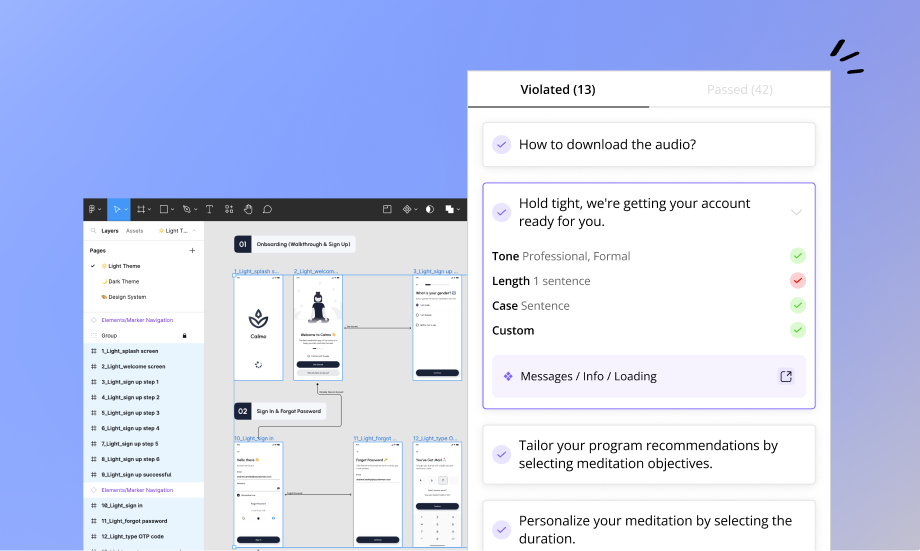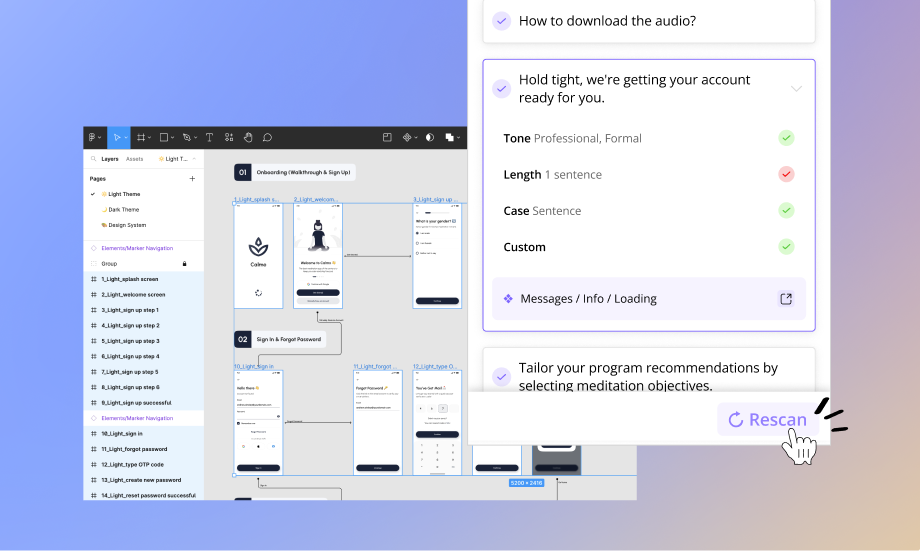This feature is available on our Growth plan and up. Start a free trial to try it out!
One of the most valuable benefits of creating content guidelines using Guidelines and binding them with your design components, is the ability to automatically scan for content violations without leaving Figma.
Check out this video tutorial about Audit:
This guide is about understanding the prerequisites for running content audits and how to use them to streamline your writing and review processes.

Audit prerequisites
To run a content audit, at least one guideline should be created and linked to a component or set as universal:
- Universal guideline - By creating a universal guideline, any text in Figma can be compared to it.
- Component guideline - By creating a guideline and linking it to a design component, all linked texts in the component instances can be compared to it.
When using universal guidelines, note that all text elements are eligible for audit. In this case, you'll have to specifically select texts to avoid including non-copy texts in the audit.
Running an audit scan
- Open the Audit tab.
- Select any selection in Figma that includes texts linked with guidelines (universal or component).
- Click Run an audit scan. If a scan was already executed, click Rescan on the bottom-right corner.

Audit scan results
Scan results are grouped by text elements, and divided into two tabs:
- Violated - A list of texts that violate at least one instruction (Tone, Length, Custom, etc.) of a linked guideline.
- Passed - A list of texts that have passed their linked guidelines check.
Each card on these lists includes a breakdown of all linked guidelines' instructions. The "Custom instruction" property of a guideline is also broken down into smaller pieces of guidelines by our AI model, and the scanned texts are checked for each of them.

Fixing and rescanning
The scan results allow you to understand exactly what content violates what guidelines. Next, you usually want to:
- Go through each text that failed the audit and modify it to comply with its linked guidelines.
- If the audit result for a text appears wrong for some reason, and the text fully complies with the guidelines, you can click Dismiss to remove the text from the list.
- To make sure all violations are fixed, click Rescan once you have reviewed the results and fixed all violations.
The Rescan button considers the selection in Figma at the moment you click it. If you want to rescan the same content from the last scan, make sure you select it in Figma before you click Rescan.


